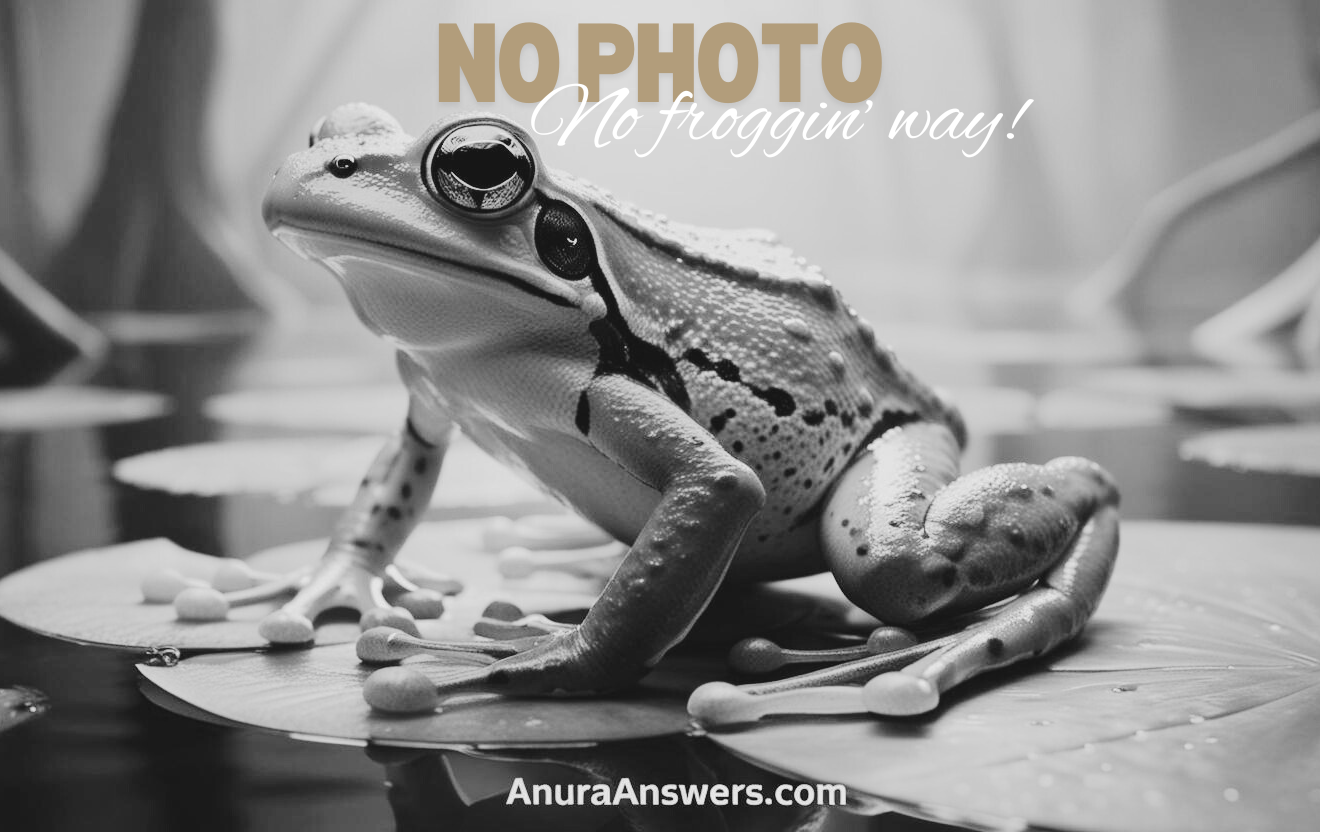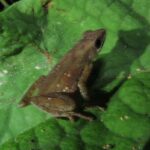- The Delicate World of <em>Ischnocnema pusilla</em>: Exploring Brazil's Tiny Forest Jewel
- Introduction: Meet Brazil's Forest Gem
- Taxonomy and Classification
- Natural Habitat: The Mystical Forest Floor Dwellers
- Physical Characteristics: Nature’s Master of Camouflage
- Behavior and Life Cycle: Silent Songs and Hidden Nurseries
- Ecological Role: Small Yet Significant
- Threats and Conservation Status: Preserving Fragile Forests
- Cultural and Scientific Significance: Symbols of Fragility and Resilience
- Conclusion: Joining Voices for the Forest's Smallest Inhabitants
The Delicate World of Ischnocnema pusilla: Exploring Brazil’s Tiny Forest Jewel#
Introduction: Meet Brazil’s Forest Gem#
Amid the lush tapestry of Brazil’s Atlantic Rainforest, an enchanting, delicate note rings softly from beneath damp leaves and moss-covered roots—a call barely audible, yet deeply significant. The owner of this voice is none other than Ischnocnema pusilla, a captivating and diminutive frog whose unassuming size and modest coloration belie the fascinating secrets of its biology, lifestyle, and role in Brazil’s unique ecosystems.
Ischnocnema pusilla, known colloquially as the Tiny Robber Frog, belongs to a group renowned for their intriguing ecological niches and behaviors. Rarely venturing beyond the shady sanctuaries of untouched rainforests, these frogs highlight the profound connection between habitat integrity and wildlife persistence. Intriguingly, pusilla, meaning “small” in Latin, aptly describes their size—adults hardly ever exceed the length of a human thumbnail. Yet, despite their modest stature, these frogs exhibit extraordinary adaptations and play crucial ecological roles.
Taxonomy and Classification#
Ischnocnema pusilla belongs to the family Brachycephalidae—a diverse lineage of frogs predominantly found in South American regions. Within this family, it resides under the genus Ischnocnema, a grouping characterized by species that thrive primarily on forest floors and utilize direct-development reproductive strategies. The absence of a tadpole stage is a defining trait of this genus, a fascinating adaptation we’ll delve into more deeply later.
First described scientifically by zoologists in 1925, Ischnocnema pusilla shares evolutionary ties with other forest-floor dwelling frogs like Ischnocnema guentheri, with differences pronounced not just genetically but also geographically and ecologically. Understanding the taxonomy aids in appreciating this species’ unique biological traits and its crucial niche within the diverse Atlantic Forest ecosystem.
Natural Habitat: The Mystical Forest Floor Dwellers#
Confined mainly to Brazil’s eastern Atlantic Forest region, Ischnocnema pusilla thrives within high-humidity environments, particularly forests rich in leaf litter, fallen logs, and shaded understories. Its distribution range includes states such as São Paulo, Rio de Janeiro, Espírito Santo, Minas Gerais, and southern Bahia—a span characterized by consistent moisture levels and stable temperatures that create a perfect sanctuary for this sensitive amphibian.
Picture a forest floor shimmering with morning dew, where sunlight streams sporadically through dense foliage above, casting dappled patterns over fallen leaves. Amid the intermittently sunlit shadows, these tiny frogs navigate comfortably, their cryptic patterns blending seamlessly with the earthy tones beneath their delicate limbs. Their precise microhabitats—humid leaf litter and mossy ground—provide shelter, nourishment, and optimal breeding conditions. The ongoing integrity of these microhabitats remains critical in maintaining healthy populations of I. pusilla.
Physical Characteristics: Nature’s Master of Camouflage#
Adult Ischnocnema pusilla typically measure no more than 15–20 millimeters, making them truly among the rainforest’s tiniest inhabitants. Their small size facilitates concealment amid the extensive leaf litter, safeguarding them from predators. Their skin displays a mosaic of grays, browns, greens, and subtle cream-colored hues—a palette perfectly matched to fallen foliage. Occasionally, darker stripes or mottled patterns adorn their backs, serving as essential camouflage, allowing them to remain hidden from the prying eyes of predators like birds and larger amphibians.
The skin texture, delicately roughened and granular, further enhances their ability to blend into their surroundings. This camouflage is not merely cosmetic; it is critical to their survival strategy, rendering them virtually invisible to potential threats. Their hind legs, though slender, are well-muscled for precise leaps and quick escapes, facilitating movement through the intricate labyrinth of their microhabitats.
Behavior and Life Cycle: Silent Songs and Hidden Nurseries#
A Life Without Tadpoles: Direct Development#
Perhaps one of the most fascinating aspects of Ischnocnema pusilla’s life history is its reproductive strategy. Unlike many amphibian species whose offspring undergo dramatic metamorphosis as aquatic tadpoles, this extraordinary little frog skip entirely over that stage. The species practices direct development—laying eggs that hatch directly into miniature froglets fully equipped for terrestrial life. Each egg, carefully concealed amidst moist leaf mold or beneath sheltered debris, nurtures the embryonic frog directly, thus eliminating the dependence on freshwater habitats for reproduction and significantly reducing predation risks associated with open-water breeding sites.
Secretive Hunters of Small Insects#
These secretive frogs principally capture small insects and arthropods such as ants, beetles, mites, and even tiny spiders. Hunting predominantly at night under the cover of darkness, Ischnocnema pusilla utilizes a sit-and-wait strategy. With precise vision adapted to low-light conditions and extremely sensitive hearing that picks up the smallest rustles of insect movement, they rapidly extend their sticky tongues to capture unsuspecting prey with pinpoint accuracy.
A Subtle Courtship Song#
The males produce soft, subtle calls barely audible to human ears—a melodious whisper resonating gently through the leaf litter. These serenades attract females during humid evenings, initiating their carefully concealed courtship rituals. Breeding typically occurs during Brazil’s wet season, ensuring dependable moisture levels crucial for egg survival and development. Females, once courted and fertilized, meticulously hide their clutches deep within moist foliage, demonstrating careful site selection to maximize offspring survival.
Ecological Role: Small Yet Significant#
As minute as their physical presence may be, Ischnocnema pusilla frogs play indispensable ecological roles in maintaining balanced rainforest ecosystems. Acting as effective predators, they keep invertebrate populations in check, indirectly aiding in the health and diversity of plant life. Moreover, their presence, behavior, and overall reproductive success reflect broader ecosystem health, making them valuable bioindicators of forest integrity and fertility.
Conversely, these tiny frogs contribute to the food web as prey, sustaining populations of forest predators such as amphibian hunters, birds, small mammals, and reptiles. Thus, they uphold the delicate ecological equilibrium necessary for maintaining diverse, flourishing rainforest ecosystems.
Threats and Conservation Status: Preserving Fragile Forests#
Like many inhabitants of Brazil’s Atlantic Forest, Ischnocnema pusilla faces a mounting array of threats. Habitat loss from deforestation, urban expansion, agriculture, and pollution increasingly fragments their habitat, challenging their survival. Furthermore, climate change intensifies unpredictable rainfall patterns, directly impacting their delicate breeding cycles and embryonic development.
According to the International Union for Conservation of Nature (IUCN), Ischnocnema pusilla is currently listed as Least Concern, largely due to its relatively wide distribution across protected habitats. However, threats continue unchecked, stressing urgency in strengthening conservation strategies and awareness to safeguard their long-term viability. Conserving the Atlantic Forest through national parks, reserves, and effective ecosystem management is vital to protect not only these frogs but the entire biodiversity complex that shares their habitat.
Cultural and Scientific Significance: Symbols of Fragility and Resilience#
In scientific circles, species like Ischnocnema pusilla embody evolution’s extraordinary adaptive strategies, contributing extensively to studies on direct developmental biology, amphibian biodiversity, and ecosystem health indicators. They have profound symbolic value representing resilience in conservation narratives, highlighting how protecting even the smallest species delivers immense ecological dividends.
Conclusion: Joining Voices for the Forest’s Smallest Inhabitants#
The story of Ischnocnema pusilla reminds us that in nature’s orchestra, each species has its unique notes to play—and each matters greatly. By safeguarding the future of tiny inhabitants like these frogs, we protect entire ecosystems vital to Earth’s stability and resilience. Let us heighten awareness, deepen conservation efforts, and continuously marvel at nature’s intricate web. After all, within every delicate whisper of their quiet song hides a plea to preserve and protect our planet’s natural legacy.







